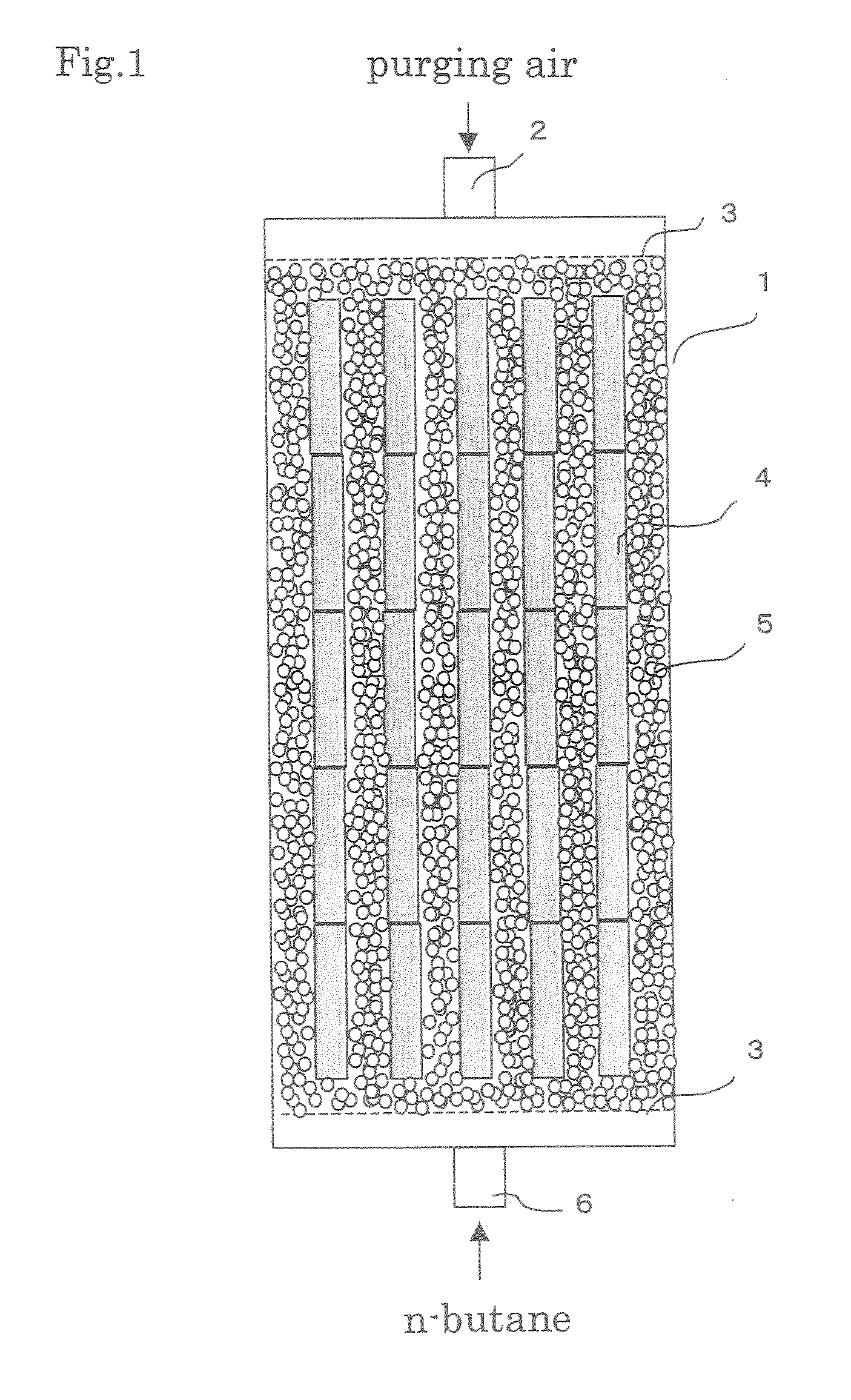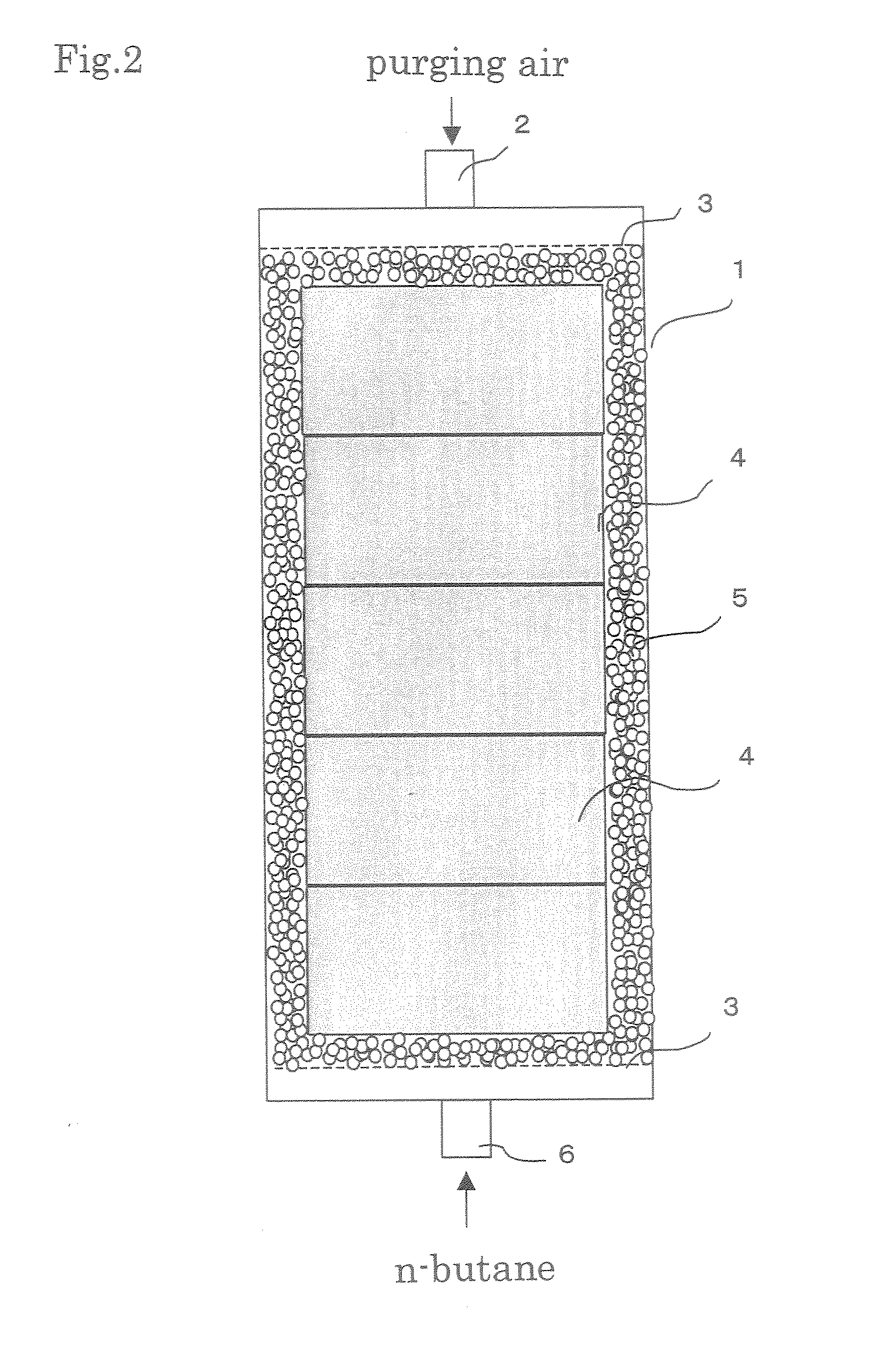Evaporated fuel gas adsorbent, evaporated fuel gas trapping apparatus, active carbon and process producing the same
- Summary
- Abstract
- Description
- Claims
- Application Information
AI Technical Summary
Benefits of technology
Problems solved by technology
Method used
Image
Examples
example 1
[0083]100 parts by weight of anthracite coal powder (0 crucible swelling number, 85% by weight fixed carbon content) whose ash content obtained by water washing was 2.5% by weight was mixed with 10 parts by weight of pitch and 25 parts by weight of coal tar. The resulting mixture was molded into cylindrical pellets each of which is 3 mm in diameter and 3 to 10 mm in length by use of a ring type pelleter produced by Ueda Steel Co., Ltd. These pellets were used as the raw material of activated carbon. The raw material was carbonized by being heated to 750° C. for three hours.
[0084]Thereafter, the carbonized material was heated to 800° C. for five hours under the atmosphere of mixed gas consisting of 10% by volume carbon dioxide and 70% by volume nitrogen containing a 20% by volume water vapor, and continuously underwent the activation process for twenty hours without changes. Thereafter, the material was further heated to 980° C., and continuously underwent the activation process for ...
example 2
[0086]The material that had been molded and carbonized in the same way as in Example 1 was activated at 800° C. for 20 hours under the same mixed gas atmosphere as in Example 1. Thereafter, the material was further heated to 980° C., and continuously underwent the activation process for 18 hours. As a result, granular activated carbon was obtained (Sample 2). Physical properties of Sample 2 are shown in Table 1. The BWC / ASTM of Sample 2 was 15.0.
example 3
[0087]The material that had been molded and carbonized in the same way as in Example 1 was activated at 800° C. for 20 hours under the same mixed gas atmosphere as in Example 1. Thereafter, the material was further heated to 980° C., and continuously underwent the activation process for 12 hours. As a result, granular activated carbon was obtained (Sample 3). Physical properties of Sample 3 are shown in Table 1. The BWC / ASTM of Sample 3 was 13.0.
PUM
| Property | Measurement | Unit |
|---|---|---|
| Temperature | aaaaa | aaaaa |
| Temperature | aaaaa | aaaaa |
| Pore size | aaaaa | aaaaa |
Abstract
Description
Claims
Application Information
 Login to View More
Login to View More - R&D
- Intellectual Property
- Life Sciences
- Materials
- Tech Scout
- Unparalleled Data Quality
- Higher Quality Content
- 60% Fewer Hallucinations
Browse by: Latest US Patents, China's latest patents, Technical Efficacy Thesaurus, Application Domain, Technology Topic, Popular Technical Reports.
© 2025 PatSnap. All rights reserved.Legal|Privacy policy|Modern Slavery Act Transparency Statement|Sitemap|About US| Contact US: help@patsnap.com



